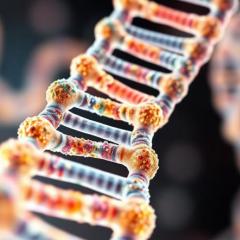Patients suffering from a painful form of arthritis which fuses bones in the spine and pelvis may have hope for the future development of new treatments.
Researchers at The University of Queensland Diamantina Institute (UQDI) in Brisbane have made a major breakthrough in the understanding of the molecular mechanisms underlying the disease, ankylosing spondylitis (AS).
AS causes the immune system to attack the spinal and pelvic joints, leading to chronic inflammation. Unlike other forms of arthritis where inflammation leads to bone loss, AS results in bone growth and can consequently cause the spine and or pelvis become fused into a fixed position.
AS affects up to 80,000 Australians and currently there is no treatment available which causes disease remission. However, a new discovery by researchers at UQDI could help pave the way for the development of new treatments.
Headed by Professor Matt Brown, UQDI scientists formed an international consortium with research groups in the UK, US and Canada to embark upon the largest study in history into the genetic causes of AS. Their research has identified eight new genes that help clarify previously unexplained aspects of AS. In particular, these genes help explain why bone formation occurs and why some AS patients also develop the conditions Inflammatory Bowel Disease and/or psoriasis.
Professor Matt Brown commented the findings shed light on a 40 year old genetic mystery. In the 1970s it was discovered that nearly all AS patients carried a particular gene called HLA-B27.
According to Professor Brown, “the link between AS and HLA-B27 is one of the strongest known genetic associations of any common disease. However, the precise role this gene plays in AS has never been clear until now.”
He and his colleagues have discovered that a mutation in a second gene, ERAP1, only appears in HLA-B27 positive AS patients. The finding suggests these two genes work together in AS to disrupt the way the cells in the spinal and pelvic joints interact with the immune system. This, in turn, may help explain the strong immune reaction seen in AS, and is expected to open up new avenues in the search for new drug treatments.
The study, which will be published this week in the journal Nature Genetics, also has far reaching implications beyond AS. The identification of the interaction between these particular genes is the first solid evidence of two genes working in concert to determine susceptibility in any human disease.
“These crucial findings provide the first confirmation that in humans, as has been shown in plant and other animal species, interaction between genes is important in influencing disease risk,” said Professor Brown.
Media: Caroline Davy, Marketing & Communications Manager (07) 3176 6623 c.davy@uq.edu.au



